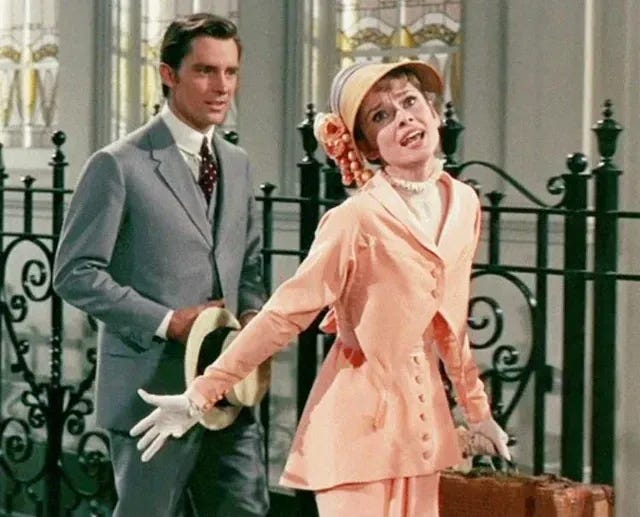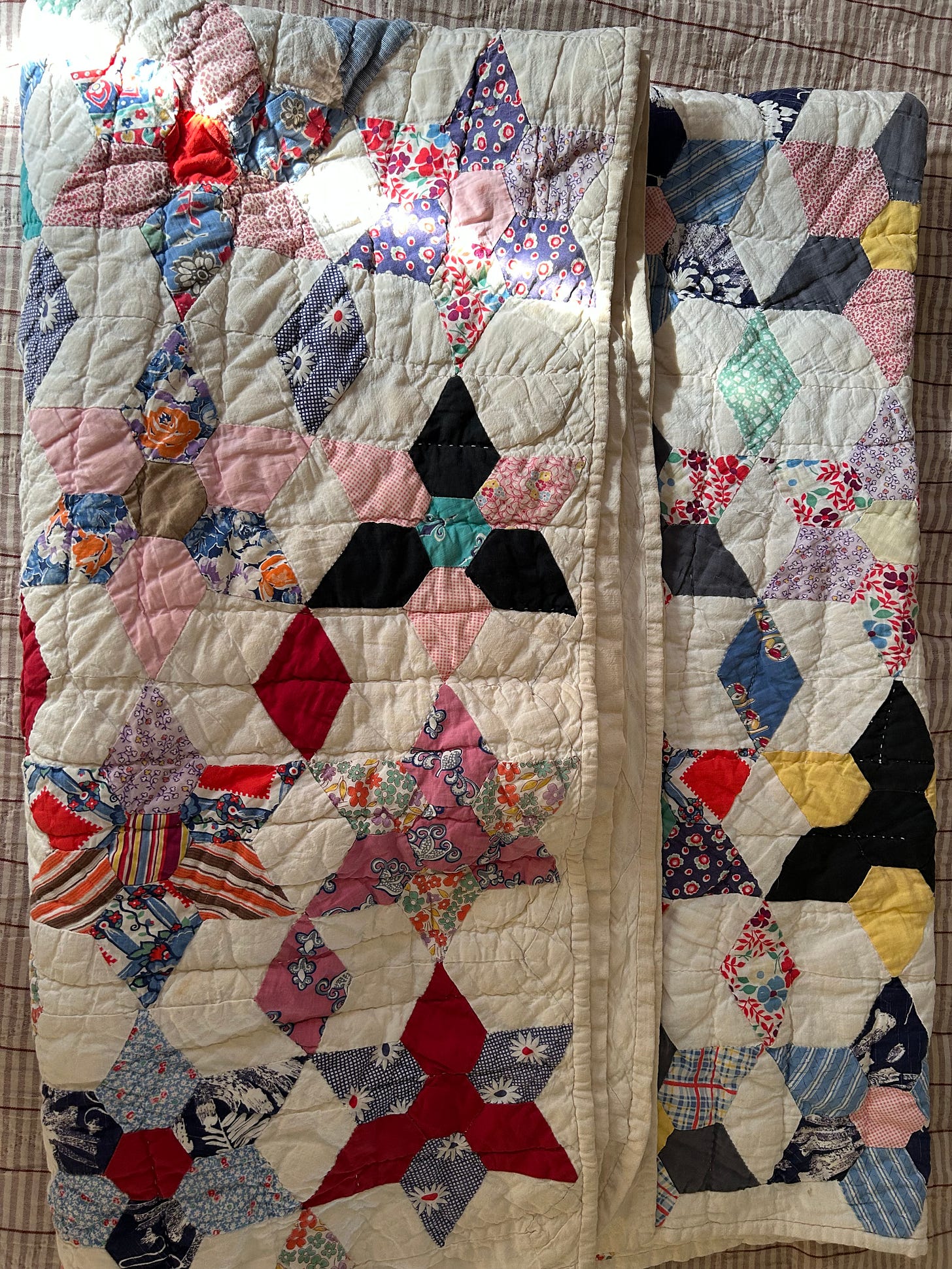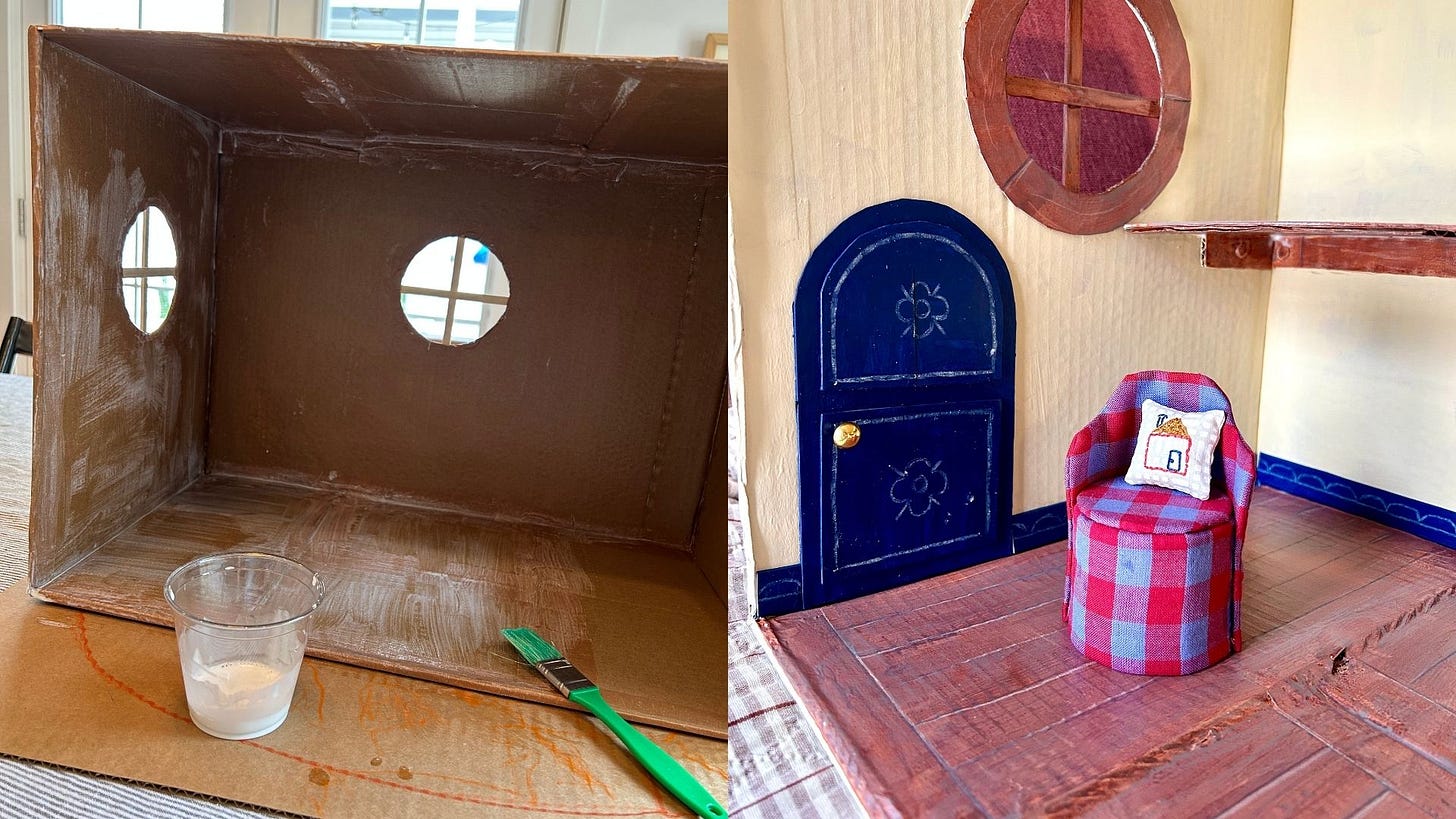Passing from words to matter
My first byline, my current obsession with making miniature things
This morning, my first-ever byline appeared in Electric Literature. It’s a trace echo of a past version of me. The essay, about the idiosyncratic intellectual curiosities that drive certain nonfiction writers, was pitched months ago, when I was experiencing that same fever of curiosity myself.
The essay is titled, “Nonfiction Isn’t False, but Who Says It’s True?” If you check it out, I’d love to hear what you think.
I cold-pitched the idea on July 24, when I was in the thick of a writing compulsion that started in March and left in September without so much as a by-your-leave.
The editing and publication timeline is such that the seed I planted in July is only being harvested now. I enjoyed the process of working with the editor over the past month to find and hone the truest kernels of the essay. And I’d often think that the me of this summer would have found that process extraordinarily motivational. I would’ve leveraged my “forthcoming Electric Literature publication” in other pitches to editors. But that was the old me, not the current me, and I haven’t made any pitches since the summer.
What happened? Well, my mode of expression changed, from words to materials.
Here are the facts: the continual ideas and insights that used to interrupt my every waking moment vanished. The flowing spigot went bone dry. At the same time, I ended a voracious reading spell that saw me devouring out-of-print works of criticism, multiple biographies of the same person, essay collections, philosophy. It wasn’t a conscious choice to stop. My desire just evaporated.
In its place: I started handsewing. First, squares for a simple quilt. Then, tiny stuffed animals for my kids. Next cardboard became my medium, constructing critter houses. Which needed furnishing, so I got sticks of bass wood and balsa, wood glue and mitre shears. I hauled my old fabric stash out of the attic (a relic of 2021’s apparel-making obsession) to make tiny pillows and upholstered furniture. I ordered new fabric in micro prints, the right scale for the miniature world I was creating.
I talked about it with my kids. My daughter put in an order for a lamb queen with a blue cape, silver crown, and red-and-blue dress, which I’m working on for her birthday later this month. With the twins last night, I constructed cardboard sailboats for their tiny critters and they cradled their sailboats while we read Ahoy! at bedtime.
Some things I make are objectively cool looking, but most of it’s what you’d euphemistically call “naive.” Unlovable except to its maker — and her kids. The little critters I gave them are nothing special, but they adore them. Same with the messy cardboard structures I’ve made.
The other day I discussed all this with my daughter. I said: Remember how before I was always reading, and I was working on that book? Now, instead, I’m crafting. My interests change. I don’t really have a choice. There will come a day where my interests change again. But for now, this is what I’m interested in.
It was a chance to tell her something real about me, the me who is not just her mom. She took that in, then said: I won’t let your interest change! I’ll make you do projects forever!
The version of me that makes tiny chairs is far more exciting to my kids than the one that reads theories of the novel.
As an observer to myself, what I see is this: most of the year I was driven toward intellectual pursuits. Ideas and concepts expressed through a single medium: words. Reading and writing, thinking and expressing, all in words.
Word overload, perhaps.

It’s like I’m enacting a personal version of Kant’s dialectics, where yesterday’s thesis of verbal reflectivity was pushed out by today’s antithesis of nonverbal doing.
It’s as if I became burned out on language itself and reached for its opposite.
Crafting. Materiality. Mind, hands, body, matter combine to create something that wasn’t there before. Thinking without words. The use of tacit knowledge that exists somewhere inside (where?) to bring a new physical object into being.
Anthropologist Tim Ingold writes in The Textility of Making that material creation is “an ongoing, generative movement that is at once itinerant, improvisatory and rhythmic.”
He continues:
It is about becoming rather than being. You cannot be a mountain, or a buzzard soaring in the sky, or a tree in the forest. But you can become one, by aligning your own movements and gestures with those of the thing you wish to draw.
In Ways of the Hand, pianist David Sudnow writes about learning jazz improvisation. The keyboard is a terrain, a landscape, and the pianist has trekked it over and over. He’s come to know countless paths through the landscape, all the ways to get from one place-note to another place-note. Making music is a matter of traversing physical locations by means of hands and arms.
So already, the expert pianist is a bodily, physical thinker. And on top of that, Sudnow explains — in words — that learning jazz improvisation isn’t something that can be taught in words. Much to his frustration, while trying to learn improv from his teacher:
I would spot him going over what I saw was a course. He would go many places where the courseness in this sense could not be detected, involving intricacies that seemed puzzling, but I figured they were constituted as all the rest, and within his play many Iittle spates of orderly passage couId nonetheless be spotted. I would ask ‘what was that?’ He would say ‘what was what?’ … I would say, ‘that little thing you just did on the G minor chord,’ and he would have a hard time finding what he had ‘just done.’ He would at times frankly say, ‘I’m not following rules so I don’t really know what I just did’ (and on other occasions admit, ‘I just improvise, I really cannot tell you how, you have to have a feel for it’).
You have to have a feel for it. That applies to so much we do with our hands, including sewing. A feel of bunchiness in the hand; a sense of place in a sea of stitches. We know what to do based on the imperceptible communion of our senses (touch, sight, proprioception) and physical material.
All happening at the level of nonverbal thought. Perhaps with no thought at all. You might call it “processing,” but that makes us sound like computers. I’m tired of the computing analogy. When you’re sewing a hem, you’re not accomplishing it through programmatic, rote thinking. I am sewing a hem. A hem is a bound edge of a garment. A hem requires that the fabric be folded in on itself and stitched fast. Something else entirely is happening, and not strictly in the mind.
As my old friend Wittgenstein said – in a different context I’ll shamelessly appropriate – “Whereof one cannot speak, thereof one must be silent.” Some things cannot be expressed in words.
I’ve tried a few times to merge this new state of existence with my established writing practice here. I started drafting two earlier pieces on similar themes, and true to my old habits, read some books in the same neighborhood: as well as the Sudnow book mentioned above, there’s The Craftsman, by Richard Sennett. Both excellent, both remain unfinished.
My old intellectual curiosity still smolders. Why am I now drawn to handcrafting? What happens in our minds when we use our hands? How is it that I’m figuring things out in my brain without verbal thought? What kind of thinking is that, and how does it work? But I’m no longer able to see these threads through to completed pieces.
And so I didn’t publish anything here in all this time. I’ve been measuring my present efforts against my old standards, the ones that led to fully realized pieces like this one, and my current efforts keep falling short.
Today, on the day of my first “real” publication, I decided to just get something out. Don’t overthink, don’t be too self-critical. Because I do want to keep one foot in the writer’s world; I’ll even settle for a mere toe. The writing itch will come back one day, and I don’t want to lose all that I built in the season that’s just ended.

While crafting, I like to put on YouTube videos. Often, they’re long walks through the English countryside (the rainier the day, the better). The sounds of birds, running water, visions of lichen and moss and irregular stone walls. Or, it might be craft technique videos, since learning through seeing is really the only way, aside from trial and error. You can’t learn to sew or expertly use materials from a book.
Recently I stumbled on Jane Lindsey’s channel. She’s a Scottish textile crafter who talks about changing curiosities, creativity, and handcrafting – all things that speak to me right now.
In one video, Jane mentions a concern from a member of her crafting community. Sue’s creative spark had left her; she had made nothing for the whole month of October. Sue was worried the spark would never return. Jane used Sue’s experience to muse about the seasonality of creative inspiration, and the fallow periods that lie between intense phases. I saw parallels to my own changing interests. My intellectual season came and went. Now I’m in a material season, a hands-on season, a season that produces physical artifacts.
Toward the end of the video, Jane offers an analogy. Creative inspiration, she says, is like surfing. Sometimes you’re on the crest of a wave, but a lot of times you’re just paddling, waiting. You can’t control when the wave comes, nor what form it takes. When it does arrive, you have a choice: ride it, or sit it out.
Just as I can’t control the ocean, I’m helpless to control where my interests turn. That’s honest wisdom I’ve earned by age 40. All I can control is whether to seize the wave, or to shun it. To ride it, harness it, or turn my back on it. And so here I am, sewing, gluing, constructing, painting. And curious to see where this wave – and the next, and the next – take me.
If any of this resonates with you, I’d love to hear it.
Stay curious,
Laura





As I started reading this I thought of Sudnow, an adept in Ethnomethodology...and then his name showed up! You read Ways of the Hand, one of my favorite books on how we teach ourselves to be musicians.
It's kinda funny: you write about how you got burned out by thinking, words, research. Then you go into a new obsession, and bolster it by reading a text like Sudnow: you will never entirely escape the world-welt, Laura, but you know when to step back, far enough away, to see from a new vantage point. And from that remote area, you craft with your hands other things not words.
How does the Electric Lit article harmonize with making art with your hands? Are not both techné?
This is just beautiful. I can't do both words and making at the same time. Crafting words means not crafting things but who knows which I should be doing?